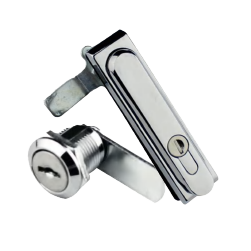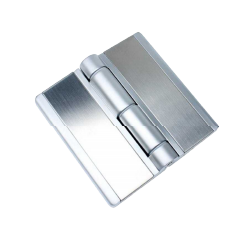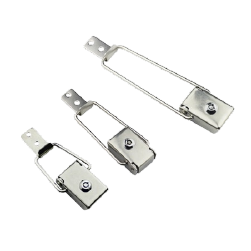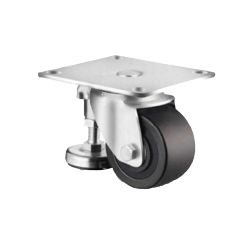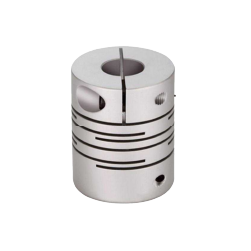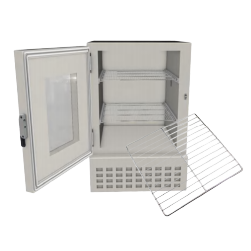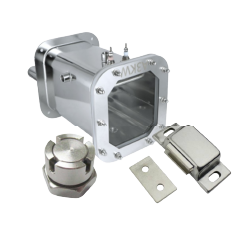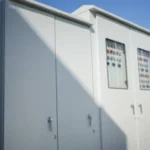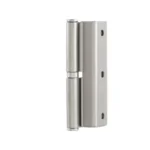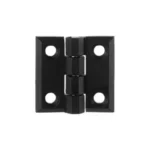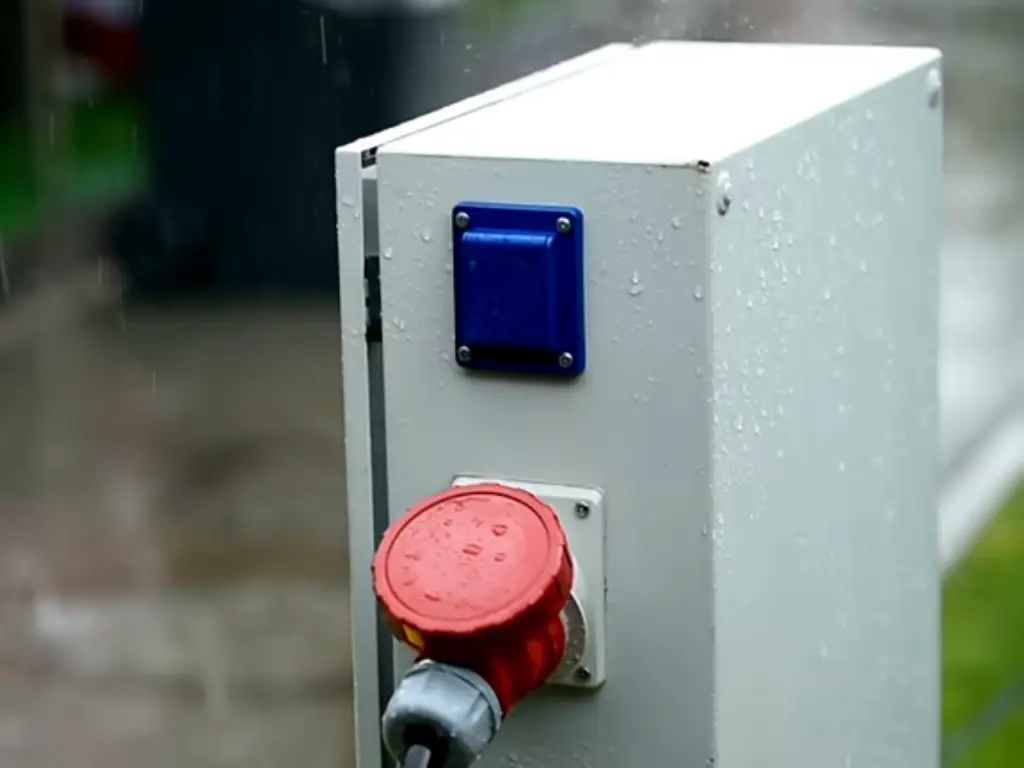
Introduction
Product failure is expensive and, in many cases, avoidable consequences in the electronic engineering world. Environmental ingress, or the infiltration of water, dust, and moisture, which damages sensitive parts, is among the most frequent offenders. A well-engineered waterproof housing is not a luxury; it is the basic protection that ensures reliability, durability and real-world performance of a product.
This guide goes beyond theoretical concepts to give a practical, systematic approach to engineers and designers. It outlines the key steps in developing a genuinely robust, waterproof enclosure, including setting standards and learning the art of sealing, to test the end product against the most demanding tests. In this case, we deal with the science and substance of perfect enclosure design.
Decoding Ingress Protection: IP and NEMA Ratings Explained
The objective must be defined before any design consideration is made. This goal is measured in terms of standardized rating systems in the context of environmental protection. The most common two standards are the Ingress Protection (IP) code and the National Electrical Manufacturers Association (NEMA) ratings. Successful design is based on a clear understanding of both.
Understanding the IP Code
The most internationally recognized system is the IP Code as defined by the international standard IEC 60529. It employs a two-digit system to categorize the level of protection.
- First Digit (Solids): This figure, which is between 0 and 6, shows the degree of protection against the entry of solid foreign objects, ranging from a hand (level 2) to microscopic dust particles. A rating of 5 indicates that the enclosure is dust-protected (ingress is not totally prevented but will not affect operation), whereas a rating of 6 indicates that the enclosure is totally dust-tight.
- Second Digit (Liquids): This figure is between 0 and 9K and indicates protection against water. The levels are logically increasing, starting with protection against dripping water (1) and sprays (4) and going up to temporary immersion (7) and constant submersion under pressure (8). An IP67 rating, as an example, will confirm that the enclosure is dust-tight (6) and can be immersed in up to 1 meter of water (7) for 30 minutes. The best ratings, including IP69K, indicate resistance to high-pressure, high-temperature water jets.
Understanding the NEMA Ratings
A wider scope is offered by the NEMA rating system, which is mainly applied in North America. Although it also covers ingress of water and foreign objects, NEMA standards (including NEMA 4, 4X, or 6P) also cover other considerations, such as corrosion resistance and construction in hazardous locations. One of the most important distinctions is that NEMA ratings are pass/fail and usually suggest protection against a variety of lower-level conditions. As an example, a NEMA 4X enclosure is not only watertight and dust-tight, but also corrosion-resistant. The NEMA 6P rating is functionally equivalent to IP68, which means protection against prolonged submersion. This functional equivalence often leads to a broader discussion comparing NEMA and IP ratings in detail.
Although there are cross-reference charts, it is important to mention that IP and NEMA ratings are not interchangeable. The IP code is more detailed on particular ingress tests, but NEMA ratings are more comprehensive on the overall robustness of the enclosure in particular environments. It is not the right way to transform one into another, but to choose the standard that best describes the target market and environment of the product. When a device is distributed worldwide, it is necessary to specify and design for a target IP rating.
Mastering the Core Principles of a Perfect Seal
The quality of a seal is what defines the integrity of a waterproof enclosure almost completely. Here, engineering principles are most important. An ideal seal is not the product of one element, but a combination of interacting elements that are intended to form an impassable barrier.
Gasket Design: Material, Shape, and Compression
The main component of this system is the gasket. It is a deformable material that, when squeezed between two mating surfaces it fills any surface irregularities to seal the path of liquids and dust. The successful attainment of a good seal is based on three variables:
- Material: Gasket material selection is determined by the environment of the application.
- Silicone: Has a superb temperature range (-55°C to 232°C) and UV resistance, which makes it suitable in outdoor use. It possesses good compression set resistance.
- EPDM (Ethylene Propylene Diene Monomer): Offers excellent weathering, ozone, and water resistance, but is incompatible with oils and solvents.
- Neoprene: A fair all-purpose material that is moderately resistant to oils and chemicals.
- Fluorosilicone: Applied where fuel and oil resistance is needed, along with a broad temperature range.
- Shape (Profile): The most popular profile is the O-ring, which is intended to fit in a special groove (gland). Other profiles are D-rings, square rings, and flat die-cut gaskets. The O-ring is commonly used because it gives a predictable, concentrated sealing force when compressed.
- Compression: This is the most important. A gasket is a squeezing thing. When under-compressed, it will not seal surface defects, leaving a path of leakage. When over-compressed, the material may be permanently deformed (a phenomenon called compression set) or damaged, and no longer be able to rebound and sustain a sealing force over time. The majority of solid rubber gaskets are meant to be compressed by 20-30 percent. The enclosure should be made in such a way that it mechanically restricts this compression to the proper value so that technicians cannot overtighten fasteners and ruin the seal.
The Role of Tongue and Groove Structure
Tongue and groove design is one of the most effective ways of controlling gasket compression and increasing protection. The design is a raised rib (the tongue) on one half of the enclosure that fits into a matching channel (the groove) on the other half. The gasket is normally seated in the groove.
This structure has several unique benefits:
- Compression Control: The groove depth and tongue height are machined accurately. With the enclosure closed, the hard stop of the tongue bottoming out in the groove gives a fixed gap, and the gasket is compressed to the precise, predetermined percentage.
- Gasket Protection: The gasket is enclosed in the groove and is not subject to direct impact or shear forces or environmental exposure such as UV radiation, which increases its service life.
- Improved Barrier: The tongue and groove interlocking pattern provides a tortuous, maze-like route to water, and ingress is much more difficult even in the event that the main gasket seal was to be somehow breached.
Advanced and Permanent Sealing Solutions
Permanent sealing solutions provide the greatest protection in applications where the enclosure will not be opened to perform service.
- Potting and Encapsulation: This is the process of filling the enclosure partially or fully with a liquid polymer compound (such as epoxy, polyurethane, or silicone) that solidifies to a solid, non-porous mass. This fully encloses the internal electronics, rendering them moisture, vibration and shock proof.
- Ultrasonic Welding: In thermoplastic enclosures, the seam between the two halves is heated locally by high frequency vibrations. The plastic melts and fuses, forming a permanent, monolithic and hermetic seal.
- Overmolding: This is a method of molding a soft thermoplastic elastomer (TPE) directly onto a rigid plastic or metal substrate to create an integrated gasket that is chemically bonded to the enclosure body. This is typical of handheld devices to give a soft-touch grip and sealing.
Making the Right Material Choice for Your Enclosure
The material of the enclosure is the first line of defense. Plastics or metals are one of the main decisions made based on the need of strength, weight, thermal management and environmental resistance.
- Plastics:
- Polycarbonate (PC): Provides outstanding impact resistance (usually with a high IK rating), a broad temperature range, and inherent UV resistance. It is a great option for long-lasting outdoor gear.
- ABS (Acrylonitrile Butadiene Styrene): A cheaper, lightweight material that performs well all-around, but it is not UV resistant without additives or a protective coating, so it is not as well suited to direct sun exposure applications.
- Fiberglass Reinforced Polyester (FRP): It is very strong and rigid, and has excellent chemical and harsh environment resistance. It is a heavy duty solution to challenging industrial or marine applications.
- Metals:
- Aluminum: Offers superior EMI/RFI shielding, is a natural heat sink to internal components, and is fairly lightweight. It may be completed by powder coating or anodizing to offer strong corrosion protection.
- Stainless Steel: The high-end option of corrosion resistance, particularly in marine, food processing, or medical environments. It is tough and hard wearing yet heavier and more expensive for machines and manufacturers.
The manufacturing process should also be taken into account in the decision. High-volume production is a major strength of complex geometries that can be molded using plastic injection molding.
Securing Your Seal with High-Quality Hardware
An ideal gasket and enclosure are useless without the mechanical capability to hold them together with a consistent and reliable force. The hardware, the latches, the hinges, and the screws are not an accessory; it is an active and critical component of the sealing system. The quality of these components is directly related to the integrity of the seal through thousands of thermal cycles and operational uses.
An example is latches, which should not just keep a door closed. A compression latch is designed to give a specific mechanical advantage. When the latch is activated, it draws the door in, exerting a large and uniform clamping force on the gasket. This will make sure that the seal is compressed to its maximum limit all around the perimeter. This is a much more dependable way of doing it compared to using plain screws, where the torque may be unreliable.
In the same way, hinges play a significant role in ensuring that seals are aligned. An improperly defined hinge may sag with time under the weight of the door, and the top of the door may pull off the enclosure body, leaving a gap at the top of the seal. This misalignment is avoided by heavy-duty or adjustable hinges so that the door is kept exactly parallel to the frame, maintaining the even pressure on which the seal relies. Quality hardware is the essential component that makes a waterproof design robust for the long term.
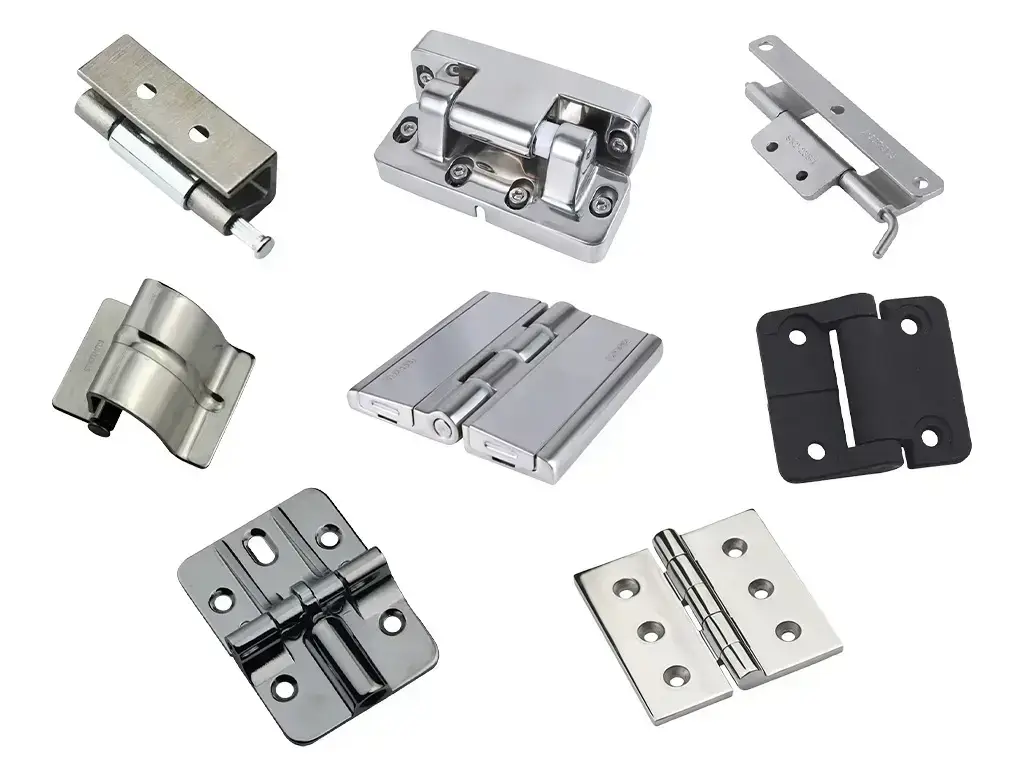
Why Choose KUNLONG as Your Reliable Hardware Supplier
These two failure points—inconsistent pressure from latches and misalignment from hinges—are where many designs falter. It is why specifying a true engineering partner is an investment in reliability. At KUNLONG, we are specialists in intelligent industrial hardware like locks and hinges, providing a one-stop technical service from design to implementation across 12 industries. Our in-house R&D team delivers full OEM/ODM customization, built upon a foundation of quality you can trust.
We are certified under ISO, CE, and ROHS quality management systems, and exclusively use materials that pass SGS testing. This commitment allows our products to deliver exceptional, reliable performance, proven by a 1000-hour salt spray test for corrosion resistance and a 20,000+ cycle life guarantee. With every batch undergoing 15 rigorous inspections, we provide the robust, high-performance components needed to forge the critical link between your enclosure and its seal.
Securing the Seal: Ports, Connectors, and Condensation Control
An enclosure is rarely an isolated box. It must interface with the outside world through cables, antennas, buttons, and sensors. Every opening created for these components is a potential leak path that must be professionally addressed.
Using Cable Glands and Sealed Connectors
Drilling a simple hole and passing a wire through it is a guaranteed point of failure. The professional solution is to use purpose-built components.
- Cable Glands (Cord Grips): These fittings are designed to thread into a hole in the enclosure wall. The cable passes through the gland, and as a sealing nut is tightened, it compresses an internal rubber grommet. This grommet squeezes tightly around the cable jacket, creating a watertight seal while also providing strain relief.
- Sealed Connectors: For applications requiring frequent disconnection, circular connectors (such as M12 or M8 types) are the standard. These connectors have integrated O-rings and threaded coupling nuts that create a fully waterproof connection (often rated to IP67 or higher) when mated.
Managing Condensation with Vents
A perfectly boxed may turn out to be its own worst enemy. As an outdoor enclosure warms in the sun, the air inside expands and pressure rises. The internal pressure decreases as it cools down at night, which causes a vacuum effect that is always attempting to draw air and moisture through the seals. This breathing may over time attract moist air. This moisture will condense on the internal surfaces and electronics when the internal temperature falls below the dew point resulting in corrosion and failure.
The remedy is a waterproof breathable vent. These high-tech parts employ a membrane, usually of expanded polytetrafluoroethylene (ePTFE), that is microporous. The pores are so large that individual molecules of air and water vapor can freely enter and leave the pores, balancing the pressure with the external environment. They are, however, thousands of times smaller than a liquid water droplet and no water can enter. Vent installation is an important measure of the long-term reliability of sealed electronics in fluctuating temperature environments.
Protecting sensitive components requires a clear understanding of how to prevent condensation in electrical enclosures.
Avoiding the Flaws in Waterproof Design
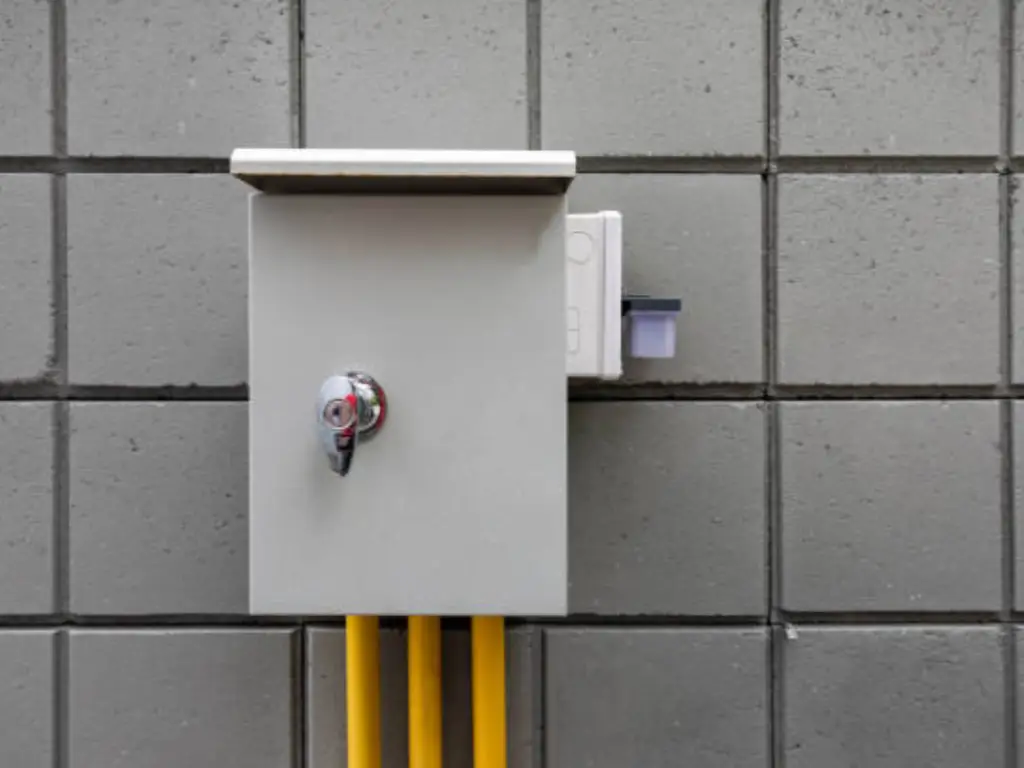
The key to a perfect design is not only the correct principles but also the prevention of the most common errors. A strong fortification may be easily defeated by one carelessness. The major pitfalls to be avoided are:
- Overlooking Material Degradation: Selecting a material such as standard ABS to be used outdoors without UV protection will result in embrittlement and cracking as time goes on, providing a point of failure.
- Improper Gasket Compression: Either over-tightening fasteners and permanently deforming the gasket, or under-tightening and leaving a leak path. The most effective prevention is a mechanical stop (such as a tongue and groove).
- Enclosure Wall Flex: The use of walls that are too thin or not adequately supported. Bowing of the walls may occur when fasteners are tightened, resulting in an uneven seal perimeter and an ineffective gasket.
- Ignoring Condensation: It is a frequent mistake to ignore the effects of pressure cycling in a sealed enclosure that will be used outdoors, resulting in internal moisture damage caused by condensation.
- Poor Cable Management: Incorporating unsealed openings or low quality grommets rather than correctly rated cable glands and connectors, providing a clear route for water ingress.
- Underestimating the Importance of Hardware: This is a serious mistake to specify low quality latches and hinges. Even the most well-designed seal will be undermined by a cheap latch that does not provide a consistent clamping force or a weak hinge that sags with time. This error essentially cancels out the investment in a quality enclosure and gasket and makes a robust design a weak one. The hardware is not just an accessory; it is a dynamic and critical part of the sealing system.
Validating Your Design: A Guide to Testing
Design calculations and principles must be validated with physical testing. This process should not be deferred until the final product is complete.
- Prototype Testing: Use rapid prototypes (from 3D printing or CNC machining) for early and frequent testing. Simple submersion tests in a water tank or sink can quickly reveal major design flaws in the sealing geometry before expensive tooling is made.
- Formal IP Certification Testing: To officially claim an IP rating, the product must undergo standardized testing as prescribed by IEC 60529. This is often performed by a third-party lab. The tests are rigorous and specific; for example, an IPx7 test requires the enclosure to be submerged at a depth of 1 meter for 30 minutes with no water ingress. An IPx6 test involves blasting the enclosure with powerful water jets from all directions. Passing these tests is the ultimate validation of the design’s integrity.
Your Waterproof Design Checklist
Use this checklist as a final review during your design process to ensure all critical aspects have been considered.
| Checklist Category | Key Review Question | ✓ / ✗ |
| Requirements | Have you clearly defined the target IP or NEMA rating based on the product’s application environment? | |
| Seal Design | Have you selected the correct gasket material and profile? Is the compression percentage calculated and controlled, preferably with a tongue-and-groove or other mechanical stop? | |
| Material Selection | Is the enclosure material appropriate for the temperature range, UV exposure, chemical environment, and impact requirements? | |
| Hardware | Are the latches and hinges specified to provide consistent, long-term sealing pressure and alignment? | |
| Ports & Connectors | Is every opening sealed with a properly rated cable gland, sealed connector, or other certified component? | |
| Condensation | If the device will experience temperature fluctuations, have you incorporated a breathable vent to equalize pressure? | |
| Wall Integrity | Are the enclosure walls sufficiently thick and rigid to resist bowing under fastener pressure? | |
| Validation | Is there a plan for both early prototype testing and formal final certification testing? |
Conclusion
The design of a waterproof enclosure is a systematic discipline. It is a process that demands a command of standards, an understanding of material science, and, most importantly, a meticulous attention to the interplay between mechanical components. From the macro decision of a NEMA versus an IP rating down to the micro-level specification of a gasket’s compression ratio, every choice contributes to the final outcome. A flawless design is not achieved by chance; it is the result of a deliberate and informed engineering process that foresees challenges and builds in robustness at every stage. The result is not merely a box, but a bastion of reliability.

